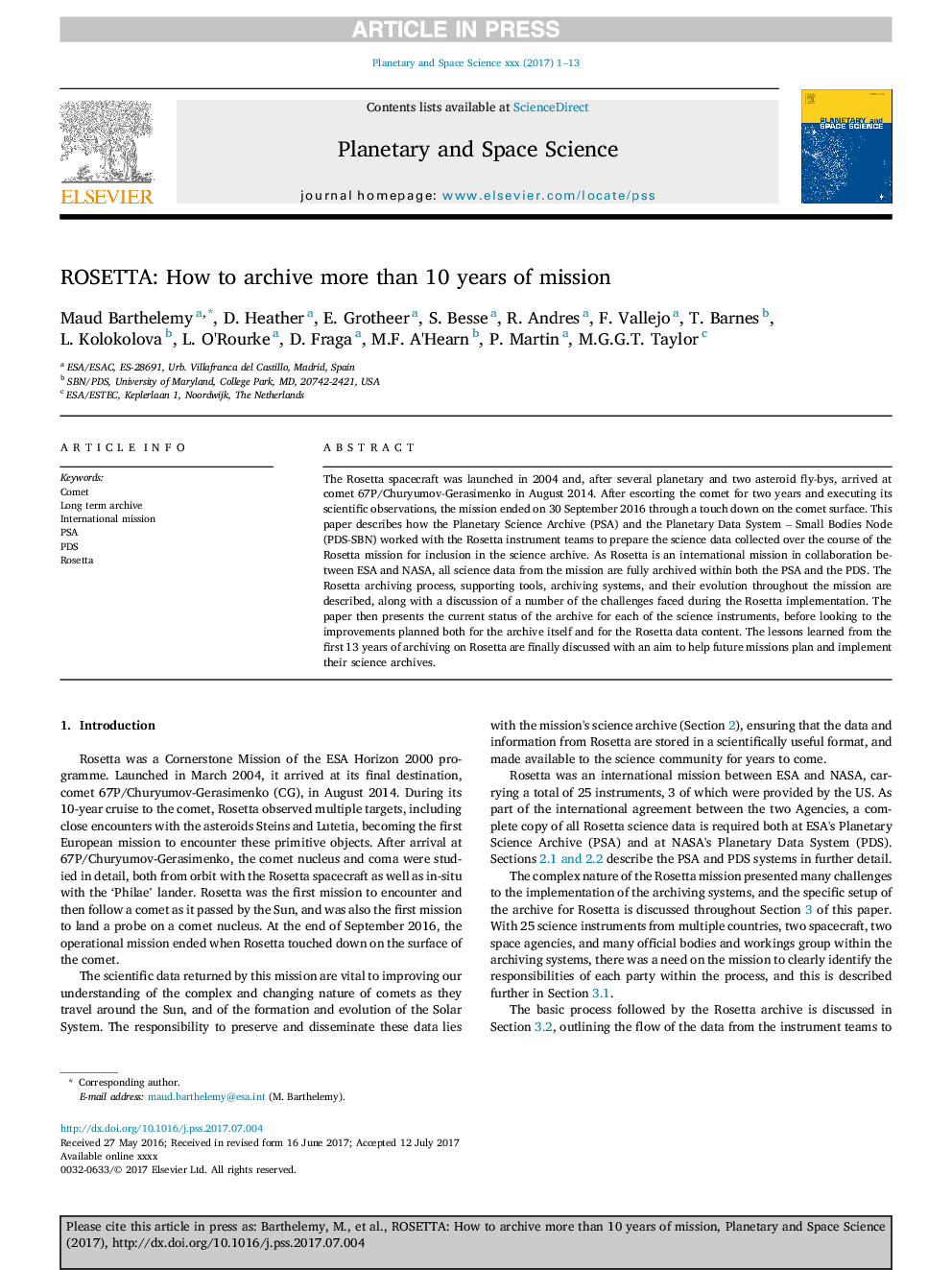| کد مقاله | کد نشریه | سال انتشار | مقاله انگلیسی | نسخه تمام متن |
|---|---|---|---|---|
| 8142502 | 1523890 | 2018 | 13 صفحه PDF | دانلود رایگان |
عنوان انگلیسی مقاله ISI
ROSETTA: How to archive more than 10 years of mission
ترجمه فارسی عنوان
روستا: چگونه بایگانی بیش از 10 سال ماموریت
دانلود مقاله + سفارش ترجمه
دانلود مقاله ISI انگلیسی
رایگان برای ایرانیان
کلمات کلیدی
موضوعات مرتبط
مهندسی و علوم پایه
علوم زمین و سیارات
فیزیک زمین (ژئو فیزیک)
چکیده انگلیسی
The Rosetta spacecraft was launched in 2004 and, after several planetary and two asteroid fly-bys, arrived at comet 67P/Churyumov-Gerasimenko in August 2014. After escorting the comet for two years and executing its scientific observations, the mission ended on 30 September 2016 through a touch down on the comet surface. This paper describes how the Planetary Science Archive (PSA) and the Planetary Data System - Small Bodies Node (PDS-SBN) worked with the Rosetta instrument teams to prepare the science data collected over the course of the Rosetta mission for inclusion in the science archive. As Rosetta is an international mission in collaboration between ESA and NASA, all science data from the mission are fully archived within both the PSA and the PDS. The Rosetta archiving process, supporting tools, archiving systems, and their evolution throughout the mission are described, along with a discussion of a number of the challenges faced during the Rosetta implementation. The paper then presents the current status of the archive for each of the science instruments, before looking to the improvements planned both for the archive itself and for the Rosetta data content. The lessons learned from the first 13 years of archiving on Rosetta are finally discussed with an aim to help future missions plan and implement their science archives.
ناشر
Database: Elsevier - ScienceDirect (ساینس دایرکت)
Journal: Planetary and Space Science - Volume 150, January 2018, Pages 91-103
Journal: Planetary and Space Science - Volume 150, January 2018, Pages 91-103
نویسندگان
Maud Barthelemy, D. Heather, E. Grotheer, S. Besse, R. Andres, F. Vallejo, T. Barnes, L. Kolokolova, L. O'Rourke, D. Fraga, M.F. A'Hearn, P. Martin, M.G.G.T. Taylor,
